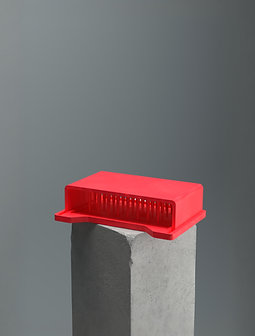4 hours ago4 min read
4 days ago4 min read


Maintaining a healthy, proliferating cell culture is a cornerstone of biological research. For adherent cells—those that grow attached to a surface—this requires a routine process called passaging, or subculturing. This process involves detaching the cells from their culture vessel and "splitting" them into new vessels at a lower density.
Why is this necessary? As cells multiply, they cover the available surface area, reaching confluence. An over-confluent culture leads to nutrient depletion, waste accumulation, and contact inhibition, which can alter cell physiology or lead to cell death. Regular passaging ensures your cells remain in the optimal logarithmic (log) growth phase.
This guide provides a comprehensive, step-by-step protocol for passaging adherent cells, synthesized from leading cell culture standards.
Before you begin, ensure you have all materials prepared and warmed to the appropriate temperature (typically 37°C) to avoid shocking the cells. All steps must be performed in a sterile cell culture hood using aseptic technique.
Adherent cells in a culture flask or dish (typically 70-90% confluent)
Complete growth medium (e.g., DMEM or RPMI-1640, supplemented with Fetal Bovine Serum (FBS) and antibiotics)
Phosphate-Buffered Saline (PBS), sterile, without calcium (Ca^2+) or magnesium (Mg^2+)
Dissociation reagent, typically Trypsin-EDTA (e.g., 0.25% or 0.05%)
Sterile serological pipettes
Sterile 15 mL conical (centrifuge) tube
New, sterile culture flasks or dishes
Water bath (set to 37°C)
Microscope (for checking confluency and detachment)
Centrifuge (with a swinging bucket rotor)
Hemocytometer or automated cell counter (e.g., Countess)
This protocol outlines the standard procedure for most adherent cell lines. Note that incubation times and centrifuge speeds may need to be optimized for your specific cell type.
First, observe your cells under a microscope to confirm they are healthy and have reached the target confluency (e.g., 70-90%). Pre-warm your complete growth medium, PBS, and Trypsin-EDTA in the 37°C water bath.
Working inside the sterile hood, carefully aspirate (remove) the old, spent cell culture medium from your flask using a serological pipette or vacuum aspiration. Be gentle to avoid disturbing the cell layer.
Gently add sterile PBS (without Ca^2+ / Mg^2+) to the side of the flask. A typical wash volume is about 2 mL per 10 cm² of surface area. Rock the vessel back and forth a few times to wash the entire cell monolayer. This step is critical as it removes residual serum, which contains inhibitors that will inactivate trypsin. Aspirate and discard the PBS wash solution.
Add a small volume of pre-warmed Trypsin-EDTA to the flask, just enough to cover the cell layer (e.g., 0.5 mL per 10 cm²). Gently tilt the flask to ensure the trypsin solution covers all cells.
Incubate the vessel for approximately 2-5 minutes. This can be done at room temperature or at 37°C to speed up the process. The exact time depends heavily on the cell line. You can check for detachment under the microscope; cells will appear rounded and begin to float. If cells are not detaching, you can gently tap the side of the flask to help dislodge them.
Once ~90% of the cells are detached, you must stop the enzymatic reaction. Add at least 2 volumes of pre-warmed complete growth medium (containing serum) to the flask. The serum in the medium neutralizes the trypsin, preventing over-digestion and damage to the cell membranes. Use the pipette to gently wash the bottom surface of the flask, dispersing the cells to create a single-cell suspension.
Transfer the entire cell suspension from the flask into a sterile 15 mL conical tube. Centrifuge the tube at a low speed (e.g., 500 x g) for 5-10 minutes. This will pellet the cells at the bottom of the tube. This step ensures all trypsin is removed and concentrates the cells.
Carefully aspirate and discard the supernatant (the liquid) from the centrifuge tube, being careful not to disturb the cell pellet. Add a known, minimal volume of fresh, pre-warmed complete growth medium (e.g., 1-5 mL) and gently resuspend the cell pellet by pipetting up and down.
Take a small sample of this cell suspension for counting. Determine the total number of viable cells using a hemocytometer or an automated cell counter.
Based on your cell count, calculate the volume of cell suspension needed to achieve the desired seeding density for your new flask(s). Different cell lines have different recommended seeding densities for passaging.
Add the calculated volume of cell suspension to your new, pre-labeled culture flasks, which should already contain the appropriate amount of fresh, pre-warmed complete growth medium.
Gently swirl the new flasks to ensure an even distribution of cells. Place them in the incubator (at 37°C, 5% CO2). If using flasks with standard caps, loosen them by a quarter-turn to allow for proper gas exchange.
References
https://www.ruf.rice.edu/~bioewhit/labs/bioe342/docs/cell%20passage.htm
https://www.protocols.io/view/passaging-adherent-cancer-cell-lines-4r3l28zm4l1y/v1
https://www.stratech.co.uk/wp-content/uploads/2022/09/Protocol_for_Passaging_Adherent_Cells.pdf
https://www.protocols.io/view/general-protocol-for-the-culture-of-adherent-mamma-kxygxp56dl8j/v1

